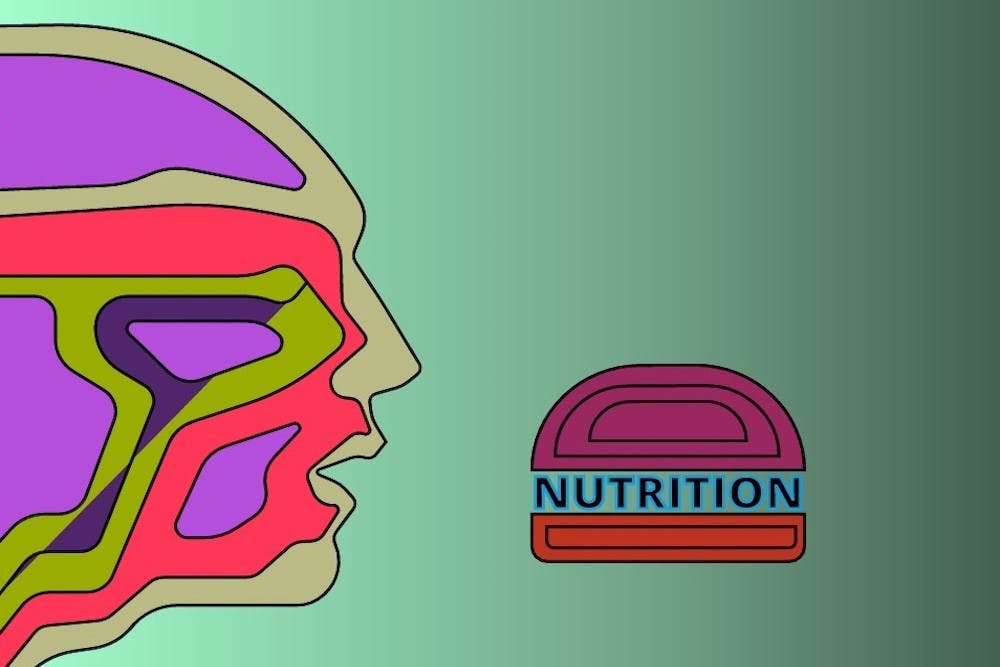It's no secret that college students are busy. If you have any doubt, take a walk through Hayden and just soak in the symphony of complaints about midterms, presentations and essays. As a result, instant ramen and meal-replacement bars have become a mainstay of the typical college diet.
Time constraints are the biggest contributors to a college student's diet, Carol Johnston, associate director of the nutrition program in the ASU School of Nutrition and Health Promotion, said.
In addition to a lack of time, many students do not have access to a kitchen or car. This leads students to cut corners, Johnston said.
Students often shy away from cooking and visiting the grocery store because making food takes time – not just to prepare, but to sort out the fact from the fiction in regards to what is healthy versus what is not.
"Now they say, 'fake news,'" Johnston said. "When that term first came out, I thought, 'my god, nutrition has had fake news since the 70s.'"
Marketers over the years have taken advantage of this confusion. The best way for students to combat the misdirection is to have a solid knowledge base of nutrition, Johnston said.
With the internet, this wave of confusion has only amplified, while the voices of knowledgeable nutritionists have only faded.
"It's very convincing with the internet now," Johnston said. "My mom would believe them before she would believe me."
Beyond false information on the internet, some college students just do not make healthy eating decisions.
A 2011 study from Oregon State University showed that college aged women had lower fiber consumption, and men had eaten more fat. But, both genders, the study found, are not eating enough fruits and vegetables.
The stakes of not finding the truth are high. An article published in the Journal of the American Medical Association compared the effects of a variety of risk factors, including smoking, high blood pressure, high blood sugar and high cholesterol.
"They found that dietary risk factors were basically the number one risk factor, both in terms of disability adjusted life years, and for death," Farshad Fani Marvasti, a medical director at the ASU College of Health Solutions, said.
Like Johnston, Marvasti said that the biggest threat comes from a processed diet.
"The biggest problem is processed food and fast food," Marvasti said.
In seeking a simple way for consumers to gauge the nutrition of their foods, Marvasti turned to an old idiom.
"If it's an ingredient that your great grandmother can't understand without recognizing it's a food, then it's probably not something you should be eating," Marvasti said.
There are other ways to glean the nutritional value by just glancing at the packaging.
GIF by Chris Phillips
"We now know it's not 'low fat,'" Marvasti said. "It's actually, you need good fats, versus bad fats."
For many years, the "low fat" trend led many to replace the fats in their foods with carbs and sugars, which has had consequences.
"That, I think, has contributed largely to the obesity issue," Marvasti said.
Marvasti noted that while fruit also contains a lot of sugar, it differs quite a bit from the sugar found in processed snacks.
"When sugar is separated from fiber, as in the case of a whole fruit versus having juice or part of a processed food, it actually acts like a drug," Marvasti said.
Additionally, while the sugar in a whole fruit is attached to fiber, filling a person up before they get their fix, processed sugars do not send signals to the brain that indicate a person is full.
"The food industry recognizes this, and that's part of the addictive food that's out there," Marvasti said.
Identifying unhealthy foods is only half the battle. Nutritionists and physicians still need the cooperation of the general public to see widespread healthier results. Dr. Shayna Mansfield, a Phoenix-based family physician, said that often times patients are hesitant to make dietary changes.
"Whenever I start to talk to people ... about 'Hey, we need to look at your diet. We need to try to modify these things that are not good, and focus on these other things,' I sometimes get the stink-eye," Mansfield said.
She said that some patients are very receptive, but others seek alternative solutions, not wanting to budge on their dietary habits.
Students and patients may not want to change their diet, but that does not mean nutritionists and doctors need to give up.
"I try to do little baby steps with people, so that it's something that they agree to," Mansfield said. "But it's something that they feel they're kind of involved with, that they're participating in."
Reach the reporter at sdeadric@asu.edu or follow @deadrick_sam on Twitter.
Like The State Press on Facebook and follow @statepress on Twitter.





